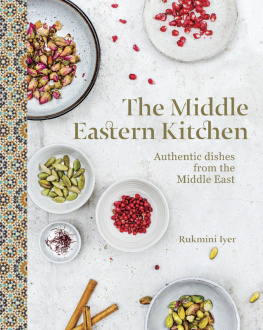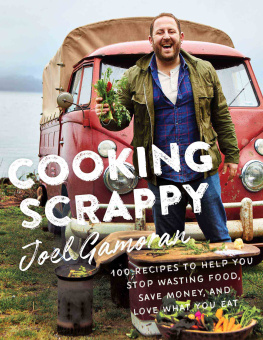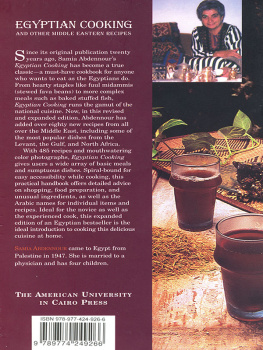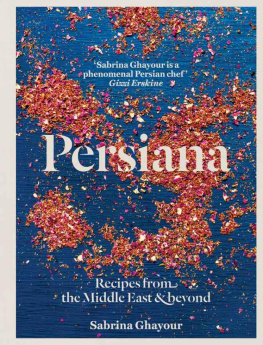
Copyright 2014 by Bjorn Shen
Photographs by Shaun Tan,
copyright 2014 by Shaun Tan
Edited by Samantha Lee;
designed by Yong Wen Yeu;
Artichoke identity by Shoon Teoh.
All rights reserved. Published in
Singapore by Epigram Books.
www.epigrambooks.sg
National Library Board, Singapore
Cataloguing-in-Publication Data
Shen, Bjorn, 1982
Artichoke : recipes & stories from
Singapores most rebellious kitchen
/ Bjorn Shen. Singapore : Epigram
Books, [2014]
pages cm
ISBN: 978-981-07-9773-7 (paperback)
ISBN: 978-981-4615-01-3 (ebook)
1. Artichoke (Restaurant)
2. Restaurants Singapore.
3. Cooking, Middle Eastern. I. Title.
TX945.4
647.955957-- dc23 OCN 882976804
First Edition

Table of Contents
A Forward Foreword

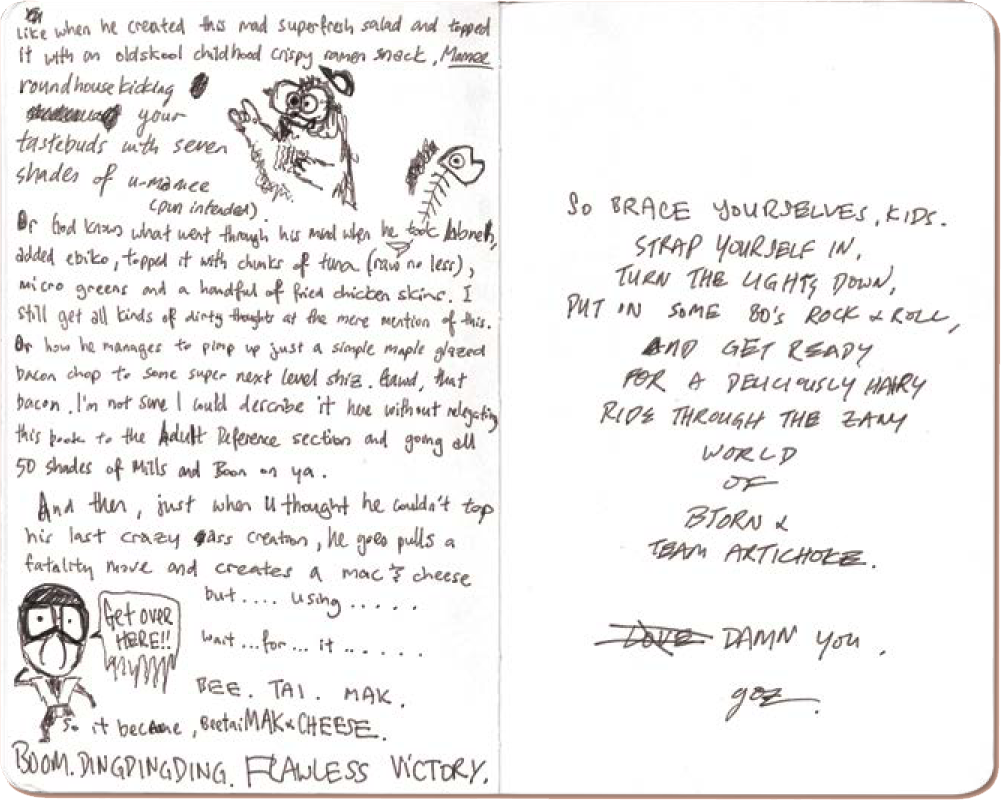
Goz Lee
Author of Plusixfive: A Singaporean Supper Club Cookbook
Notes from an Artichoke Stalker
I t was a late-ish evening in June 2011, and I was looking for a non-Asian joint that didnt serve the standard Western fare of cream of mushroom soup and braised beef cheeks. Then I found a spot for modern Moorish cuisine inspired by the fascinating flavours and smells of Turkey, Lebanon, Greece and Morocco. At the time in Singapore, outside of Kampong Glam, this was akin to uncovering chwee kuay in Warsaw. I was hot off an assignment in Turkey and pining for legitimate mezzes. When the Forgotten Grain Salada tumble of quinoa, bulgur, wild rice, capers, seeds, nuts, fruits and herbs crowned with labnehhit the table, my heart set sail on the Bosphorous. I prayed that Artichoke would never choke.
Im not an overly religious man! Bjorn once declared to me. So, in effect, he never needed my prayers. His maverick ways about the kitchen, doing unthinkable yet completely logical things to ingredients from kale to quail, were enough. Ive seen fennel and Tahitian vanilla salad; sticky duck in pomegranate molasses and pistachios; and the climax of any eveningthe Lambgasm, a massive boner of meat-stasy. And then there was brunch. What started innocently as ful medames and lamb shakshouka morphed into taste bud throwdowns where fried chicken was crowned with marshmallows and a sausage-and-bacon pie floated in a popcorn-and-corn puree. You wont find anything like this in Singapore or beyond, just as youd never expect bak chor mee in Denmark. Unless you invite Bjorn to the vaunted Copenhagen Cooking food festival and he ensconces our national noodle dish within a pillowy soft bun for the occasion.
A Singaporean can lose his or her appetite futzing over who will continue our hawker legacies, or over the indigestible reality that more and more of our heritage food arrives pre-made in a factory for someone to reheat at a stall. But Bjorn is part of a new chefs revolution, creating a brand of Singaporean cooking that we should be just as proud of. With his trademark stubbornness, Bjorn has committed at least 30 per cent of Artichokes menu to local ingredients, after hours spent haranguing small local farms to sell him their best produce. So the incredibly fresh flavours that explode in your mouth are not simply the result of Bjorns dude food wit that seasons all his creations. They are also the result of an agricultural awakening. I never knew how massive abalone mushrooms could get in Kranji.
Artichoke no longer goes by that polite modern Moorish cuisine tagline, but a cheeky deviant Middle Eastern food. Thank heavens, because dessert then was malabi topped with chilled sliced grapes. (???.) Yeah. These days, its bodacious baklava and a seriously sick Snickers tart, among other things (like a custom-made Kit Kat fortress masquerading as cake). If this is what the future of food looks like here, lets chow down the New Wok Order.
Desiree Koh
Writer


Why Write This Book?
W hile choosing a name for my restaurant, I tried every possible method. I brainstormed for nights on end, thinking up words and all their possible connotations. I eventually arrived at a shortlist of eight; some of which were good, some less so.
There was Squid Inc. The Common Room. Grub. The Mole Hole. Three Black Moles (because there is a perfect equilateral triangle on my noggin that is formed by exactly that). I ran these names through my family and close friends. There was no unanimous agreement on which name sounded right; everyone had his or her own opinion. After all the hard work put in, it started to get frustrating. I realised that even amongst the people closest to me, there was no one name that would please them all.
So I said what has since become my three-word strategic business mottofuck this shitand went off the beaten path. I grabbed Food: The Definitive Guide off the shelf, flipped to a random page, closed my eyes, and poked at it with my index finger. The word it landed on would be the name of my restaurant.
I opened my eyes. BEGINNING. Whaaaaaaat? Hell, nobeginning? Ok, try again. I shut my eyes again, flipped the pages, and hoped for fucks sake I wouldnt get another dumb word Boom. ARTICHOKE. Ok, that wasnt so bad. And that was that.
This pretty much sums up the story and ethos behind my restaurant. Id always try to plan something in a tried-and-true, organised and responsible way; Id run it by people to get their responses; theyd all give me different answers; the whole exercise would start to go nowhere; Id eventually say fuck this shit and do it my way; it would all work out in the end. These days, I just skip straight to that last step.
So I said what has since become my three-word strategic business mottofuck this shitand went off the beaten path.
But what little we did know, we brandished wildly like cavemens clubs, slinging out stuff we felt tasted good. That was as intricate as our game plan ever wasto make food that tasted good.
So Artichoke was a restaurant borne out of impulse and recklessness. Four years on, its also a testament to how an enterprise started on such a fucked up approach can actually succeed. Heres what I mean.
We started out trying to be a contemporary Middle Eastern restaurant. I chose this particular cuisine because a) I wanted to try something different, b) I had a few Arab, Iranian, and Turkish mates back in Australia where I lived previously, and c) I enjoyed the food they ate at home when I went to visit. No other reasons apart from these.
We didnt want to appear too ethnic, so we steered away from doner kebabs and Turkish tea. No shisha, no belly dancers. Operating a Middle Eastern restaurant in Singapore without the all-expected shawarma and shisha was like signing a death sentence, but we did it anyway. We never had staff from the region; none of us had Middle Eastern grandmas or grew up eating hummus and lavash. Damn, Id never been there myself, and here I was, throwing together a motley crew of cooks who themselves had almost no experience in Middle Eastern cooking. (Till today, customers are shocked to find out the head chef is not Middle Eastern, but a Singaporean dude with a
Next page

